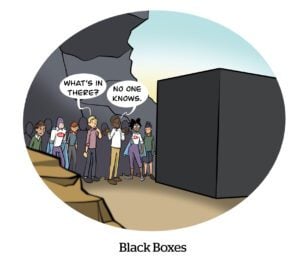How do you target people without third-party cookies or device IDs? One way is to use the weather correlated with aggregated online and offline shopping behavior.
IBM Watson Advertising released a tool on Monday that expands its weather targeting capabilities by using artificial intelligence to analyze the relationship between weather data from The Weather Company, location data down to the ZIP code level and point-of-sale data from Nielsen to uncover insights that marketers can apply to their digital campaigns.
The solution is part of a suite of AI-infused products that IBM Watson Advertising has been rolling out since January.
The first, which came out at CES, is a souped-up dynamic creative optimization tool that uses AI to drive predictive models that aim to enhance creative ad performance. The second, released in July, uses natural language processing to analyze social posts, including tone and derived personality traits, to match brands with relevant influencers. Another Watson Advertising AI product, in addition to the new weather targeting tool, is slated for release in October.
“Programmatic is rooted in automating transactions,” said Sheri Bachstein, VP and global head of Watson Advertising and The Weather Company. “What’s different about AI technology is that it allows us to make predictions and offer insights.”
Rather than third-party cookies and mobile identifiers, Watson Advertising feeds its algorithms with large amounts of structured and unstructured anonymized behavior, location, weather and sales data to find correlations, uncover insights, discern statistically significant patterns, make predictions and learn over time.
The learning piece is particularly important because it ensures improvement, Bachstein said, and it’s what separates data analytics from AI.
Ideally, the machine learning tech also detects the unintuitive patterns in human behavior.
The weather, for example, invokes certain moods in people and can have a direct impact on their buying behavior in a way that goes beyond umbrella buying during a rainstorm or ordering snow boots in the winter.
Watson tracks aggregate behavior in an effort to reveal the less obvious stuff, Bachstein said.
For instance, it found that sales of baking chocolate and cocoa increased by 62% in northwest central states, such as Kansas, Iowa and Missouri, during an unseasonably warm and rainy one-day forecast, while wine sales were up by 25% during a one-day forecast for clear conditions in east north central United States, which includes Illinois, Indiana and Michigan.
Outdoor insect control sales increased by 35% in the South during a period of wind chill.
Marketers can use this type of information to inform their targeting strategies, activate digital campaigns based on the weather’s influence on consumer behavior and emotion and make sure they have enough inventory on hand during peak times.
“Factors like humidity, temperature and other weather-related data points can actually be quite revealing,” Bachstein said.















